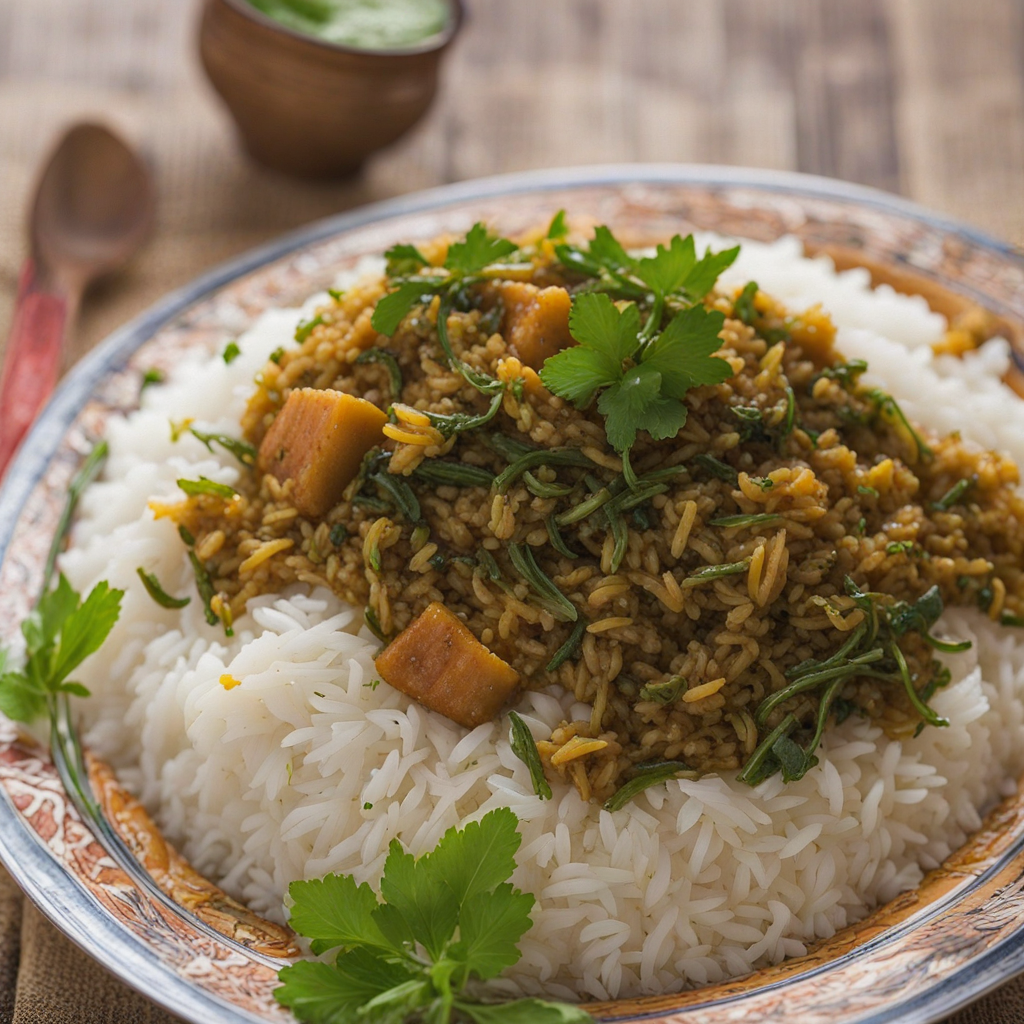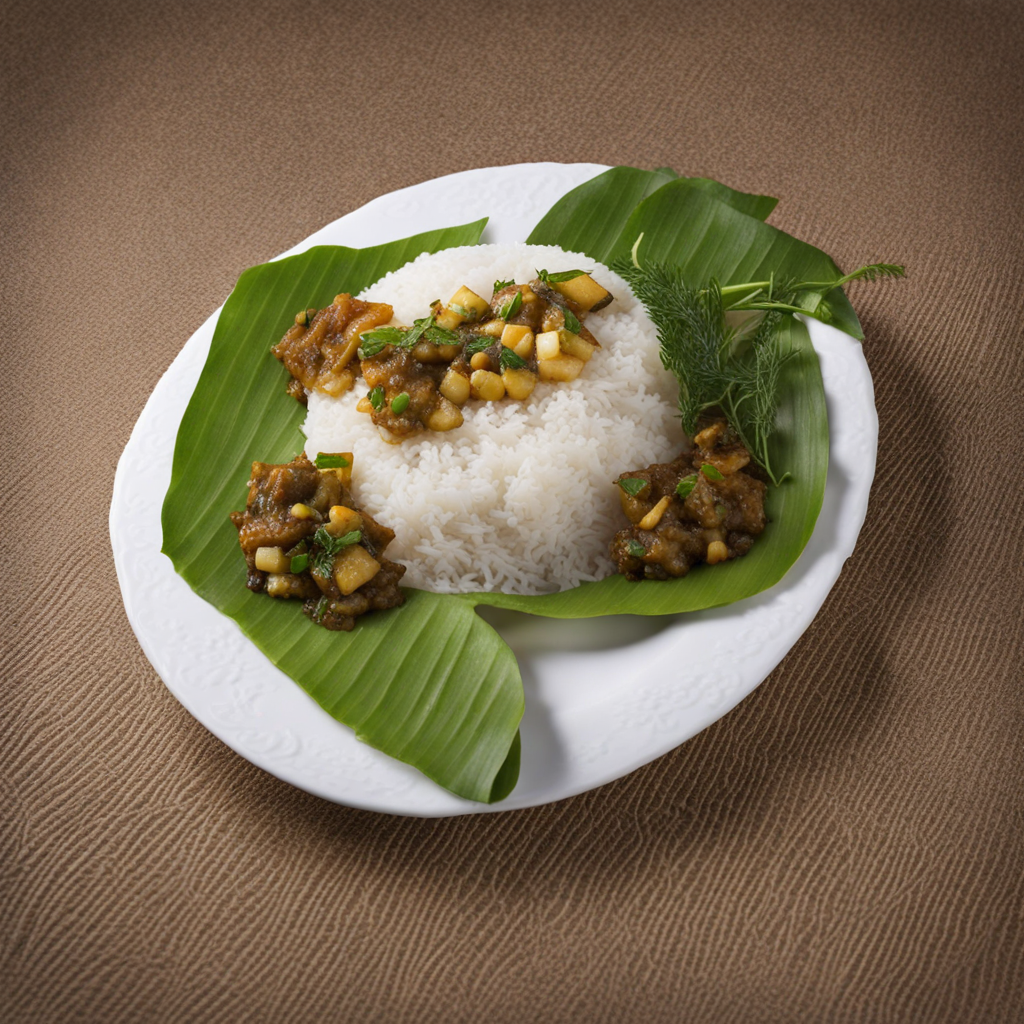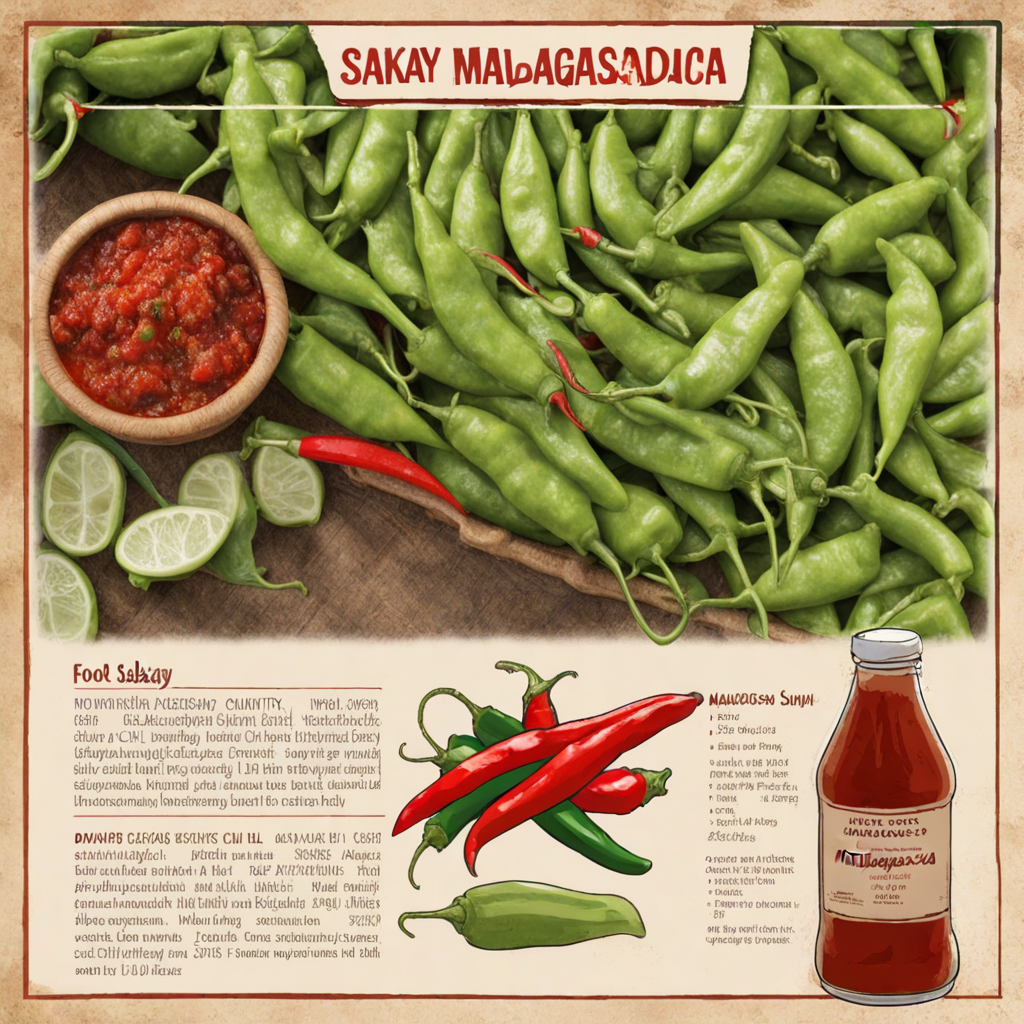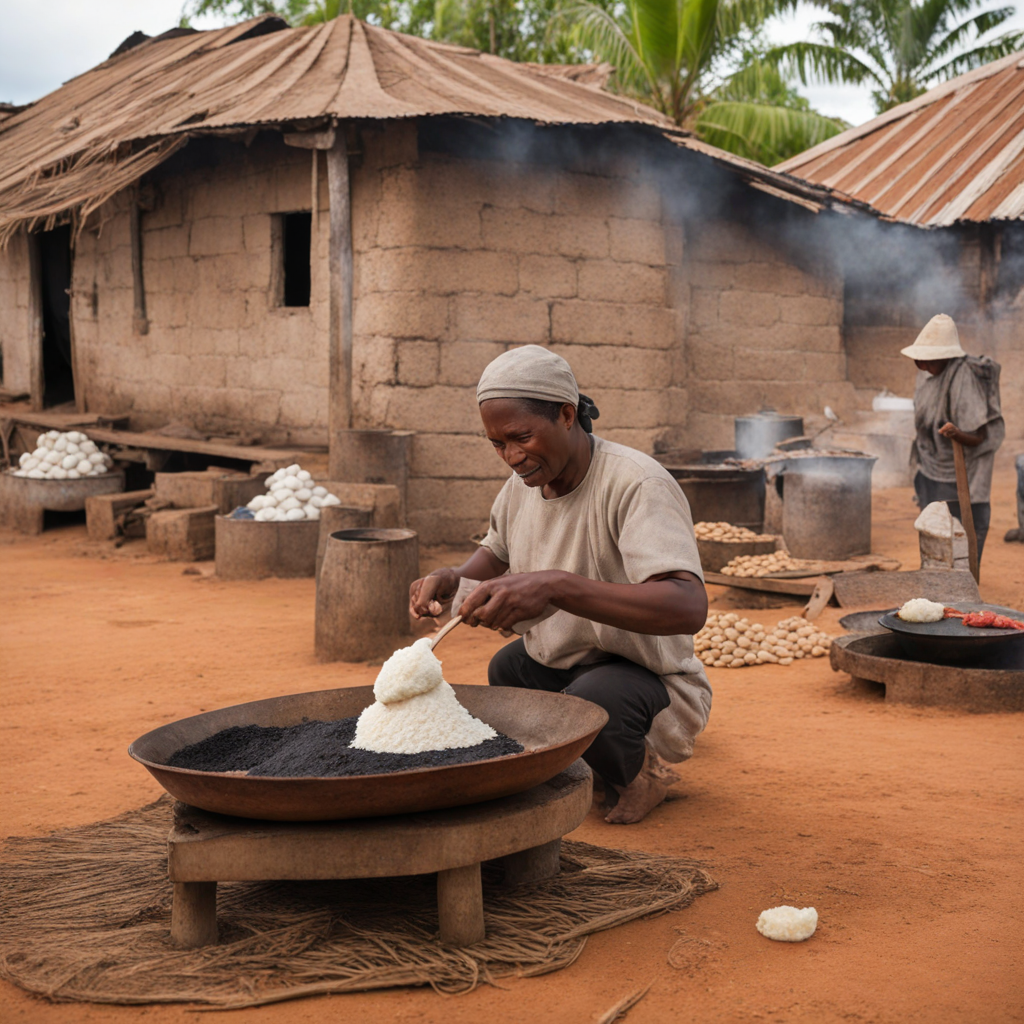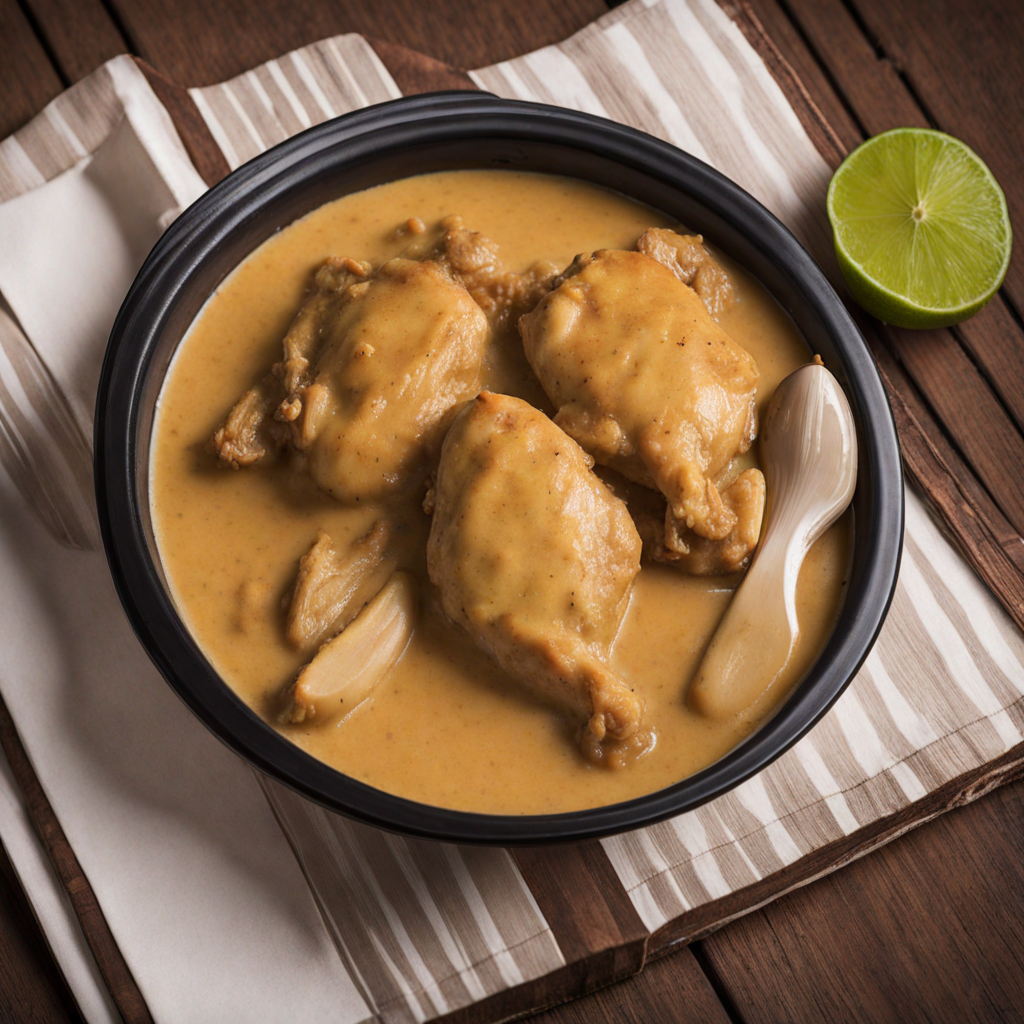Vary Amin Anana
Vary Amin Anana is a delightful Malagasy dish that beautifully showcases the vibrant flavors of Madagascar. At its core, this dish combines rice—an essential staple in the Malagasy diet—with a variety of fresh greens known locally as "ananas." These greens typically include wild leafy vegetables such as amaranth, cassava leaves, or the more exotic rampe, which impart a unique earthiness to the dish. The greens are often lightly sautéed with onions and garlic, creating a fragrant base that elevates the simple yet comforting rice to a whole new level of taste. The preparation of Vary Amin Anana is both straightforward and deeply satisfying. The rice is cooked until fluffy, while the greens are blanched and then mixed in, allowing their flavors to meld. A touch of salt and sometimes a hint of spice, like crushed chili or pepper, might be added to enhance the dish's overall profile. It’s a dish that reflects the island's agricultural richness, as it often incorporates whatever fresh produce is in season, making each serving a unique experience influenced by the local harvest. Served as a side dish or a main course, Vary Amin Anana is often accompanied by grilled meats or a spicy sauce, enhancing its role in the Malagasy culinary landscape. The combination of textures—from the tender rice to the slightly chewy greens—offers a satisfying mouthfeel, while the fresh ingredients provide a burst of flavor that is both nourishing and invigorating. For anyone looking to explore the depths of Madagascar’s cuisine, Vary Amin Anana presents an authentic taste of the island's culture and its rich agricultural traditions.
How It Became This Dish
Vary Amin Anana: A Culinary Jewel of Madagascar #### Origins Vary Amin Anana is a traditional Malagasy dish that exemplifies the rich tapestry of Madagascar's culinary heritage. The name itself translates to "rice with greens," highlighting the dish's fundamental components. Madagascar, an island nation off the southeastern coast of Africa, is known for its diverse ecosystems and cultures, which have profoundly influenced its cuisine. The origins of Vary Amin Anana can be traced back to the island's indigenous cultures, particularly the Merina people who inhabit the central highlands. Rice has long been a staple food in Madagascar, cultivated for over 1,000 years. The island's climate and fertile volcanic soil provide ideal conditions for rice farming, making it the cornerstone of Malagasy meals. The incorporation of local greens, or "anana," reflects the island's agricultural biodiversity. Anana commonly includes a variety of edible leaves, such as mustard greens, cassava leaves, and sweet potato leaves, which are abundant in the region. #### Cultural Significance Vary Amin Anana is more than just a dish; it is a symbol of community and cultural identity. In Malagasy culture, rice is not merely a food item but a vital component of social and ceremonial life. It occupies a central place at family gatherings, celebrations, and religious ceremonies. Sharing a meal of Vary Amin Anana signifies hospitality and unity, reinforcing social bonds among family and friends. The method of preparation also embodies communal values. Traditionally, families would gather to cook together, with each member contributing to the process—from harvesting the greens to preparing the rice. This practice fosters intergenerational connections and the passing down of culinary knowledge. The dish is often served alongside other staples and locally sourced proteins, such as zebu (a type of cattle native to Madagascar), chicken, or fish, reflecting the island's agricultural wealth and the importance of varied nutrition. #### Development Over Time As Madagascar's history unfolded, so did its culinary practices. The island has been a melting pot of cultures due to its strategic location in the Indian Ocean, attracting influences from Africa, Asia, and Europe. The arrival of traders, colonizers, and immigrants introduced new ingredients and cooking methods that have enriched Malagasy cuisine. During the 19th century, when Madagascar was a kingdom, the Merina royal family sought to promote agriculture and trade. This period saw an increased emphasis on rice cultivation, and Vary Amin Anana became a staple not only for commoners but also for the elite. The dish evolved to include more diverse greens and preparation techniques, with some variations incorporating coconut milk or spices, reflecting the island's growing culinary sophistication. The French colonization in the late 19th and early 20th centuries further influenced Malagasy food culture. The introduction of new vegetables, herbs, and cooking styles contributed to a culinary fusion that is still present in Madagascar today. Vary Amin Anana began to incorporate elements from French cuisine, such as the use of garlic, onions, and even herbs de Provence, while still retaining its traditional roots. In contemporary Madagascar, the dish has undergone a renaissance. As urbanization increased and globalization spread, culinary enthusiasts began to rediscover and celebrate traditional recipes like Vary Amin Anana. Chefs and home cooks alike are experimenting with the dish, adding modern twists while honoring its heritage. Today, Vary Amin Anana can be found in both humble homes and upscale restaurants, showcasing its versatility and enduring appeal. #### Regional Variations While the core ingredients of Vary Amin Anana remain consistent—rice and greens—regional variations abound. In coastal areas, the dish may be served with seafood, reflecting the abundance of fish in Madagascar's waters. In the highlands, where zebu farming is prevalent, meat may be a more common accompaniment. Additionally, different regions boast distinct greens based on local agricultural practices and climate conditions. For instance, in the north, one might find Vary Amin Anana made with a variety of wild greens, while in the south, more drought-resistant plants may dominate. #### Modern Adaptations With a growing interest in sustainable and local eating, Vary Amin Anana has found a place in the modern culinary landscape. The global movement towards farm-to-table dining resonates with this dish, as it is inherently based on locally sourced ingredients. The revival of traditional farming practices and the promotion of heirloom varieties of rice and greens have also contributed to the dish's renewed popularity. Moreover, as Madagascar faces environmental challenges, such as deforestation and climate change, the emphasis on local ingredients in Vary Amin Anana serves as a reminder of the importance of preserving indigenous agricultural practices. Many chefs and home cooks are now focusing on organic farming and the use of endemic plants, highlighting the role of Vary Amin Anana in advocating for sustainable food systems. #### Conclusion Vary Amin Anana stands as a testament to Madagascar's rich culinary heritage and cultural significance. Rooted in the island's history, the dish embodies the values of community, sustainability, and adaptability. As Madagascar continues to evolve, Vary Amin Anana remains a beloved staple, bridging the past and present while showcasing the island's agricultural diversity. The dish invites diners to experience the flavors of Madagascar while reflecting on the intricate connections between food, culture, and identity. Whether enjoyed in a bustling market, a family kitchen, or a fine dining establishment, Vary Amin Anana serves as a delicious reminder of the enduring legacy of Malagasy cuisine and the importance of celebrating local traditions in an ever-changing world.
You may like
Discover local flavors from Madagascar


